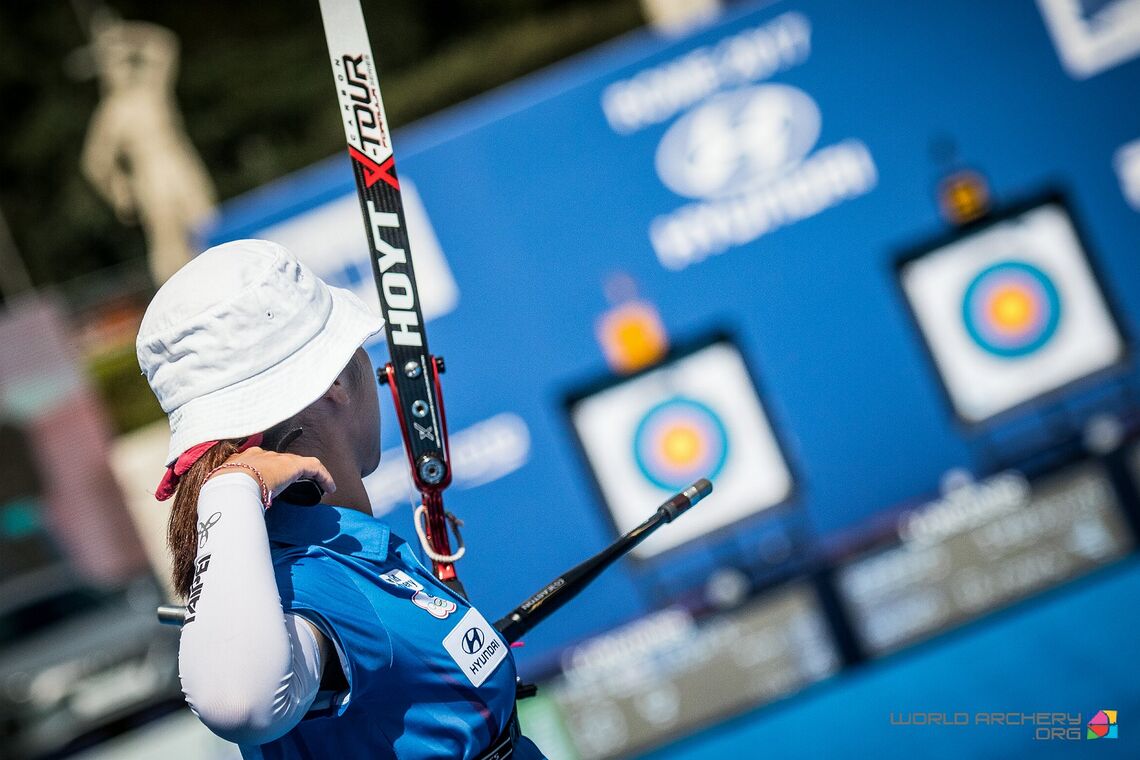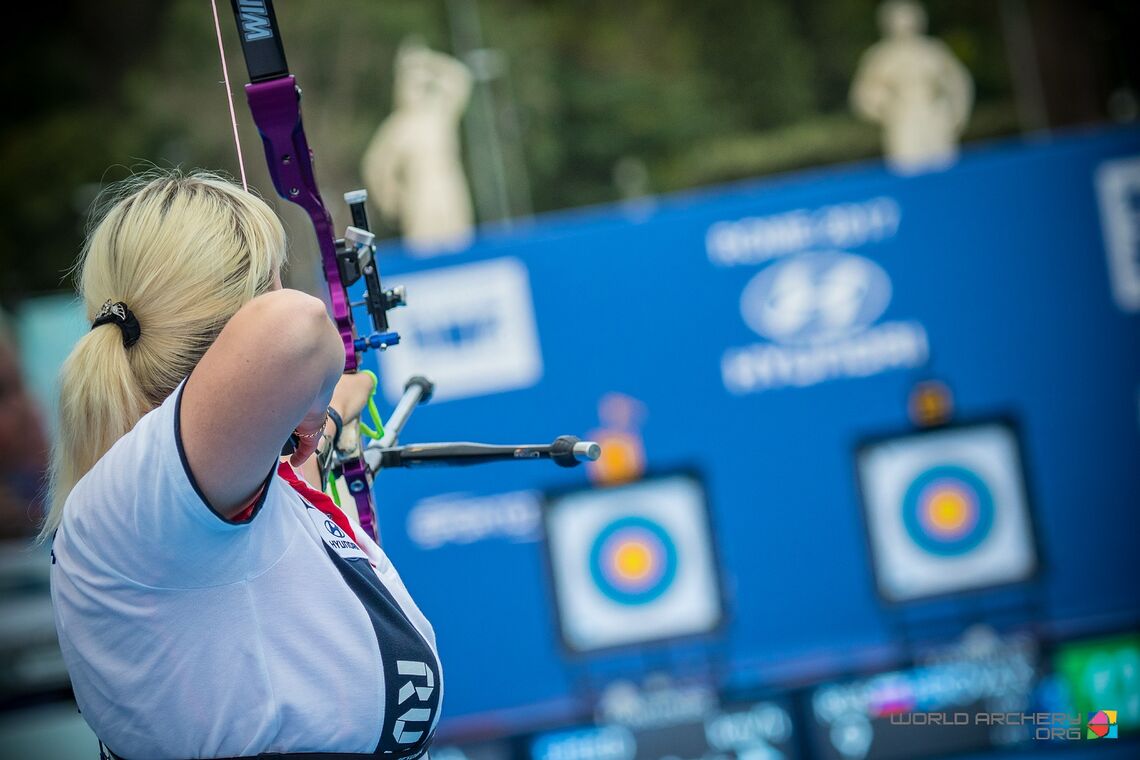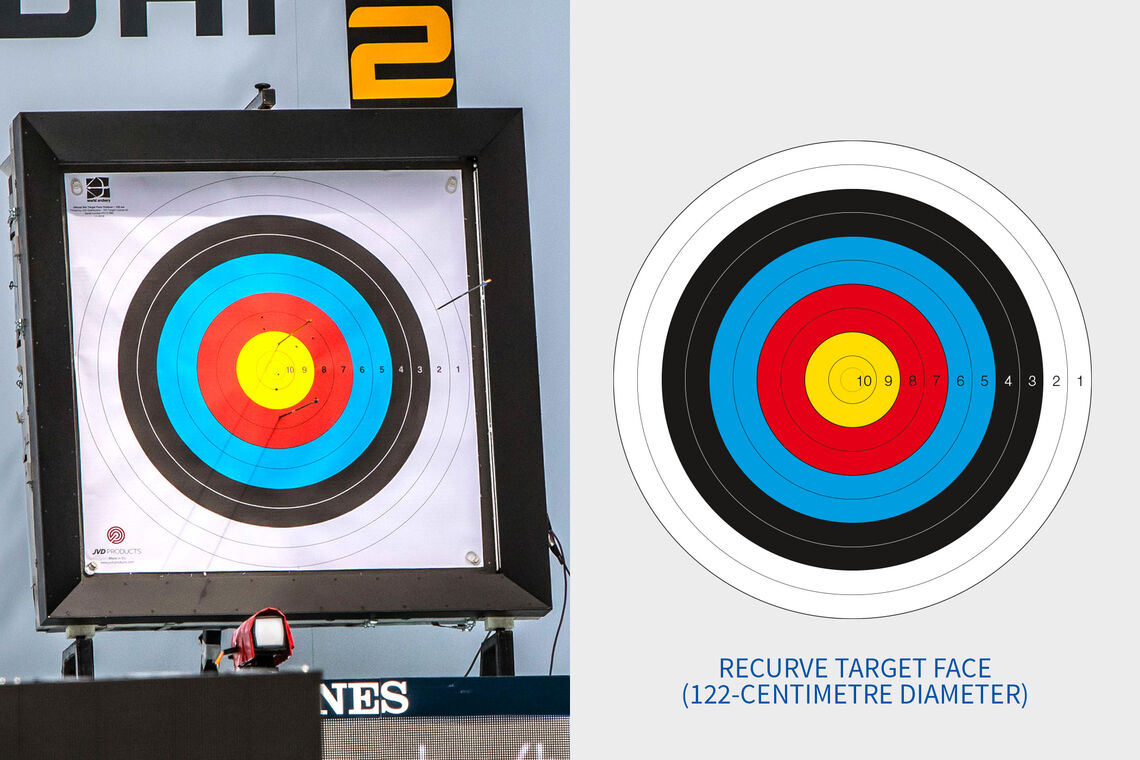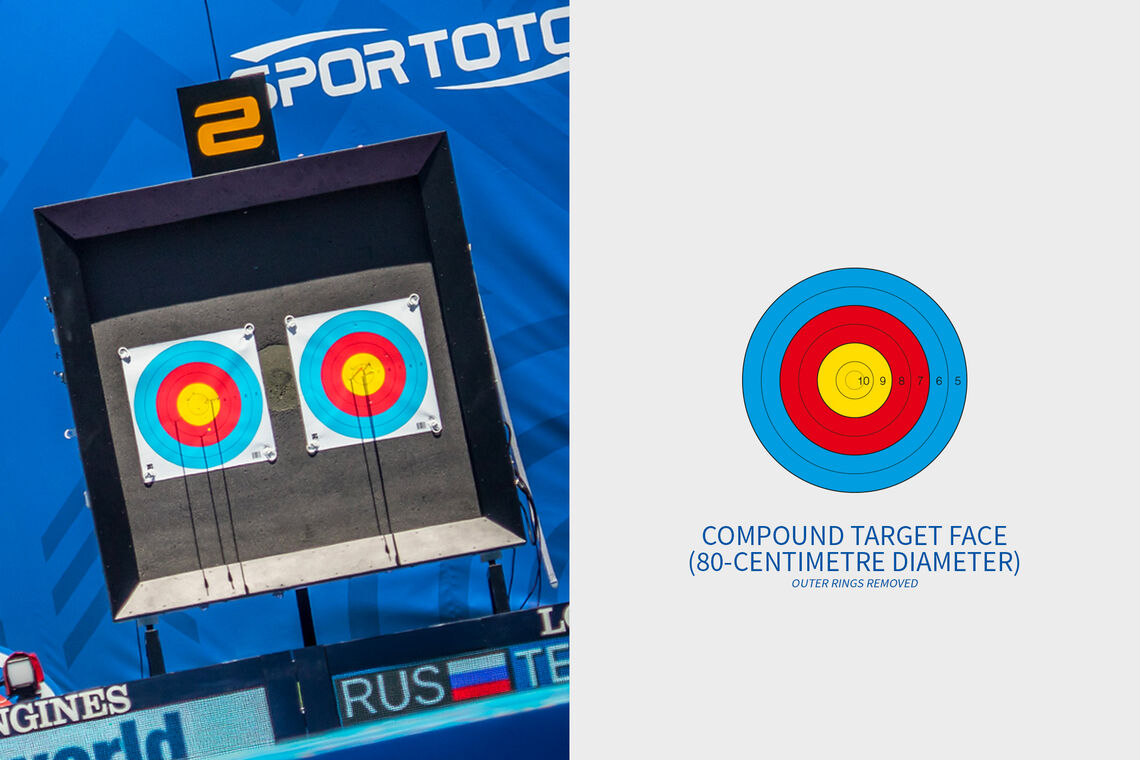
Target archery
Archers shoot stationary circular targets set at specific distances.
Target archery is the discipline of shooting at stationary circular targets set at specific distances.
Archers shoot over distances of up to 90 metres, although the standard competition distances are 70 metres (for recurve) and 50 metres (for compound), usually at the recognisable five-colour target, consisting of 10 scoring zones and gold, red, blue, black and white rings.
It is the most well-known form of modern archery and the one used at the Olympic Games, Paralympic Games, and, for the compound competitions, at the World Games and many major international events.
World Archery organises an outdoor target archery world championships, which is called the World Archery Championships, every two years. It is considered the sport’s pinnacle event, and each winner is referred to as the World Archery Champion. The event was first held in 1931.
Target archery is also the discipline used for the Hyundai Archery World Cup and World Archery Youth Championships. Variations on the discipline are used for indoor archery and para archery.
The world rankings are calculated on results from target archery events.

Targets
International target archery competitions feature archers using recurve and compound bows.
Archers in both competition categories shoot at the traditional five-colour target face with 10 concentric scoring rings. The target scores 10 points for the inner ring and one point for the outer ring. The yellow rings score 10 and nine points, red rings score eight and seven points, blue rings score six and five points, black rings score four and three points, and the white rings score two points and one point. Missing the target scores zero points.
Recurve archers shoot over a distance of 70 metres at a target face measuring 122 centimetres in diameter, with a 10-ring measuring 12.2 centimetres in diameter.
Compound archers shoot over a distance of 50 metres at a target face measuring 80 centimetres in diameter, with a 10-ring measuring 8 centimetres in diameter. The outer four rings of the target face are usually removed, leaving only the yellow, red and blue rings.
There are also international rules for archers using barebows.
Barebow archers shoot over a distance of 50 meters at a target face measuring 122 centimetres in diameter, with a 10-ring measuring 12.2 centimetres in diameter.
Competition format
International target archery competitions consist of individual, mixed team and team events.
A mixed team consists of two archers, one man and one woman, shooting in the same category (with the same bow). A team consists of three archers of the same gender shooting in the same category (with the same bow).
There are two distinct phases to a competition.
The qualification phase consists of each archer shooting 72 arrows. Archers are ranked by their total score for the individual event. These rankings provide the seeds for the brackets. The maximum number of archers that can advance is usually cut at 104.
Seeds for the mixed team event are decided by ranking the highest scoring man and woman from one country. Seeds for the team event are decided by ranking the highest scoring three archers of the same gender from one country. The number of mixed teams or teams that can advance is usually cut at 24.
The matchplay phase consists of archers, mixed teams and teams progressing through head-to-head brackets, one for each category, in which the winner of each match advances and the loser is eliminated until a champion is crowned. Recurve matches are decided using the set system, while compound matches are decided on cumulative score.
Match formats
Recurve matches are decided using the set system, which rewards archers who shoot the points required to beat their opponent at the critical moments in the match.
The goal of a set system match is to accrue a certain number of set points. The target number of set points is six in an individual match and five in a mixed team or team match. A set consists of a defined number of arrows, which is three for an individual match, four for a mixed team match and six for a team match. An archer or team earns two set points for winning a set and one set point if the set is drawn.
If an individual match is tied on five set points after five sets, or a mixed team or team match is tied on four set points after four sets, then the match is sent to a tiebreak.
Compound matches are decided using cumulative score, which rewards ultimate precision and consistency under extreme pressure.
The goal of a cumulative score match is to finish the match with the highest total score. A match consists of a defined number of arrows, which is 15 for an individual match, 16 for a mixed team match and 24 for a team match. (The arrows are split equally between archers in mixed team and team matches.)
If a match is tied on total score after the regulation number of arrows, the match is then sent to a tiebreak.
Barebow matches are decided using the set system.
Tiebreak formats
The tiebreak procedures for all competition categories are the same.
In an individual match, each archer shoots one arrow. The archer whose arrow lands closest to the centre of the target wins the match.
(If the judge cannot decide whose arrow is closest, they may call for another shoot-off.)
In a mixed team or team match, each archer shoots one arrow. The mixed team or team with the highest total score wins the match.
If the mixed teams or teams are tied on score, then the mixed team or team whose arrow landed closest to the centre of the target wins the match. If those arrows are an identical distance from the centre, then the next arrows are compared (and again for teams).
(If the judge cannot differentiate between the mixed teams or teams after the last arrow, they may call for another shoot-off.)

History and other formats
World Archery was founded in 1931 to regulate target archery with the goal of earning a permanent place on the programme of the Olympic Games. This was achieved in 1972; however, the rules of the discipline have evolved considerably since then.
Until the 1980s, international competition revolved around the format we now know as qualification, or archers shooting a defined number of arrows at set distances and target faces, then ranked on total score. Matchplay was introduced in the 1990s, revolutionising archery as a spectator sport, and refined in the 2010s with the introduction of the set system for recurve.
Several alternative competition formats are included in the World Archery Rulebook, and there are many local variations.
The 1440 Round, which consists of archers shooting 36 arrows at four distances (90, 70, 50 and 30 metres for men; 70, 60, 50 and 30 metres for women), remains a popular format around the world.

